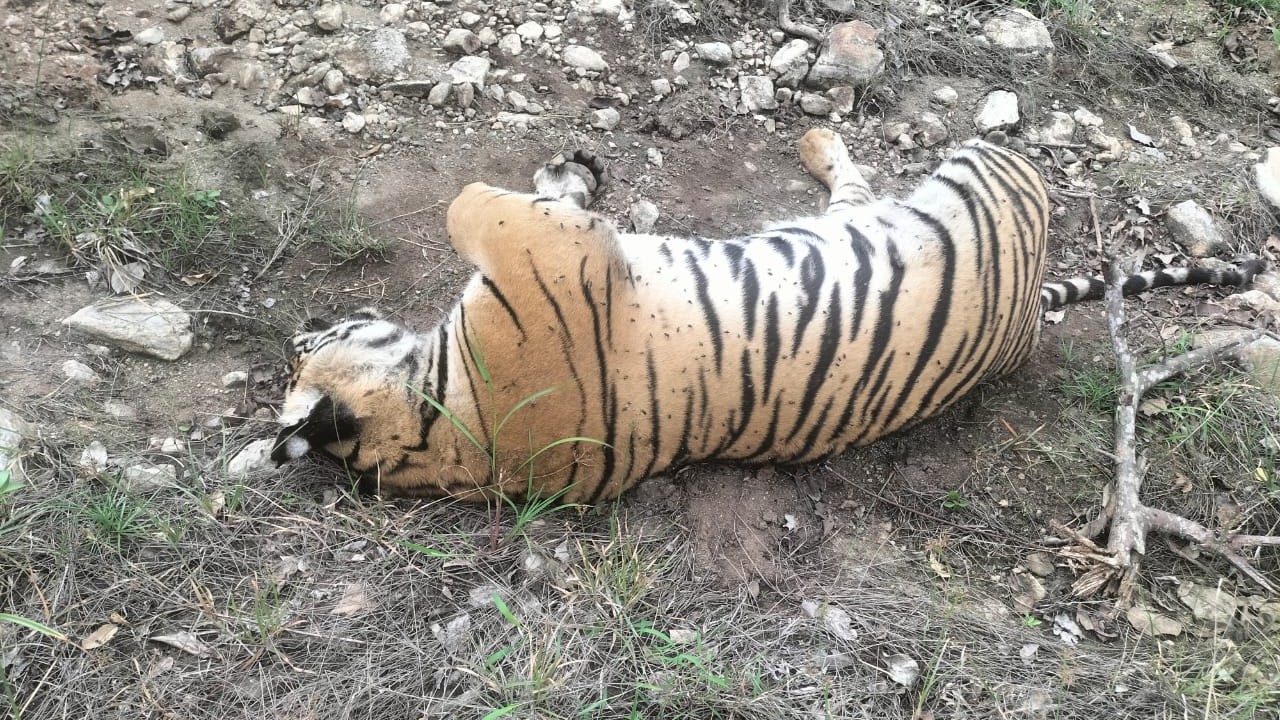Tragedy in M.M. Hills: Poisoned Cow Carcass Kills Tigress and Four Cubs
Editor: Chandan M
Published on: June 27, 2025, 7:29 p.m.

Chamarajanagar, Karnataka | In a deeply concerning incident, a tigress and her four cubs were found dead in the Male Mahadeshwara Hills Wildlife Sanctuary (M.M. Hills), located in Karnataka’s Chamarajanagar district. The discovery was made during a routine patrol on the morning of June 26, sparking widespread outrage and prompting immediate intervention by both state and central authorities. Discovery and Suspected Cause Forest officials located the carcasses in the Meenyam Range, where the tigress—aged approximately 11 years—was believed to have dragged a cattle carcass, presumably for her cubs. Preliminary investigations suggest the cow carcass had been poisoned, likely using a fluoride-based compound, leading to the deaths of all five tigers after they consumed the meat. Though poisoning remains the suspected cause, forest authorities have preserved all biological evidence. Samples of viscera, blood, stomach contents, and tissue have been collected and sent for toxicological and histopathological examination. The postmortem was conducted following guidelines established by the National Tiger Conservation Authority (NTCA). Government Response Karnataka Forest Minister Eshwar Khandre termed the deaths “unnatural and deeply tragic.” He immediately ordered a high-level probe and confirmed that a Special Investigation Team (SIT) had been constituted to investigate the case. The investigation is being led by Principal Chief Conservator of Forests (PCCF) B.P. Ravi and Additional PCCF Srinivasulu, along with senior forest officers and an expert veterinarian. Wildlife biologist and conservationist Sanjay Gubbi has also been appointed as an independent member of the committee. The inquiry team has been directed to submit a detailed report within 14 days. Minister Khandre emphasized that all possible causes—including poisoning, electrocution, or departmental negligence—will be examined thoroughly. Legal action will be taken under provisions of the Wildlife (Protection) Act, 1972 if criminal intent is confirmed. Scene of Crime and Protocol Authorities cordoned off a 500-meter radius around the site, following NTCA’s Standard Operating Procedure (SOP) for wildlife crime scenes. A dedicated forensic team is inspecting the site to look for poisoned baits, traps, or other illegal activities. To prevent further casualties, the Forest Department has intensified patrolling across M.M. Hills using drone surveillance, thermal cameras, and GPS-enabled M-STRIPES tracking systems. Anti-poaching squads have been put on high alert. Additionally, a 24×7 confidential forest helpline has been activated for local communities to report suspicious activities. Ongoing Conservation Concerns Karnataka currently has India’s second-largest tiger population with 563 tigers, according to the latest national census. This incident, marking the simultaneous loss of five tigers in one location, is one of the most severe wildlife tragedies in the state's recent history. Wildlife activists have long demanded that M.M. Hills be notified as a full-fledged Tiger Reserve—a move that remains pending despite several recommendations. Conservationists argue that the sanctuary’s vulnerable boundaries and human-wildlife conflict zones increase the risk of such incidents unless stricter protections are enforced. Accountability and Reform The incident has reignited debate over the state of forest management. Reports have surfaced indicating lapses in surveillance and manpower shortages, with some forest watchers reportedly not paid for months. Officials have assured a parallel audit into the department’s preparedness and accountability. The Chief Wildlife Warden has been tasked with submitting a report on infrastructure, staff conditions, and pending demands to the Ministry of Environment, Forest and Climate Change (MoEFCC). Conclusion This incident underscores the fragile balance between wildlife conservation and human-wildlife conflict in forest-fringe communities. The government’s response in the coming days—particularly the findings of the SIT and the handling of potential culprits—will determine whether this tragedy becomes a turning point for M.M. Hills or yet another case of reactive forest policy.